How I got hooked.
You folks are climbing remarkable mountains and rock faces, using superior technical ability, sporting years of experience, traveling to some of the most remote, beautiful, and dangerous places on earth. So what can I contribute to such an impressive community?
![Slackline]() Slackline in Charleston, SC Battery Park Slackline in Charleston, SC Battery Park | |
I realized as a newbie on Summitpost that I am somewhat unique. I started climbing at 13, never worked with a guide, lived on the east coast of the United States all my life, and until recently did not own or have much access to any gear. Even facing these challenges, I still found a way to get a wide range of experiences on a zero dollar budget.
Now, I do not claim to be like
Bradford Washburn, who 60 years ago achieved some impressive first ascents in Alaska as a college student. He was merely a few years older than I am now. And, I am way behind the young phenoms, like
Ashima Shiraishi, who learned to climb at 6 years old at Rat Rocks in Central Park, and at 11 could become one of the best young competition climbers in the world. Wow, she has corporate sponsorship.
However, I have noticed that as a fairly average guy, I am most often the youngest kid on the crag or on the glacier. So how does an ordinary teen get into all this? If you are a young kid wanting to get out of your house, or for you folks who are older than me; if the article entertains you, or reminds you of your earliest desires, your first climbs, or perhaps inspires your kids to follow you into cold, windy high places, then possibly I have given you something of value.
What possesses a person like me to climb?
Are you kidding? Every fledgling adventurer is looking for a challenge, for something new, raw, scary, and exhilarating. Motivation will NOT be an issue. Look for these characteristics:
![First High Places]() A desire to climb stuff A desire to climb stuff |
![No Rock Climbing on Pilot Knob]() Doing things which are restricted, prohibited, or discouraged Doing things which are restricted, prohibited, or discouraged | ![Friends that like to climb]() An urge to do daring things with friends An urge to do daring things with friends |
![Jumping from high places]() looking for adventure in high places looking for adventure in high places | ![Mount Townsend]() Wanting to always get to the top Wanting to always get to the top | ![Crossing The Delaware River]() And to solve problems using gear like ropes And to solve problems using gear like ropes |
If this sounds like every adventurous boy and girl you know, then, well… you understand.
The First Years
My First Crevasse. As a boy, my dad top roped and rappelled in the Boy Scouts. When I was 4 years old, he learned multi-pitch rock and ice climbing in New Hampshire. He would occasionally go climbing in Pennsylvania, though I was too young to come along.
![Pilot Mountain NC]() Dad at Pilot Knob Dad at Pilot Knob | ![Blue Glacier]() Our first trip to the Blue Glacier Our first trip to the Blue Glacier | ![My First and only (as yet) ice climb]() First Crevasse First Crevasse |
He did not set out to teach me to climb. However, after a Boy Scout outing to Washington State, we added a father-son trip to the
Olympics to visit the
Blue Glacier when I was 13. We borrowed a rope and some gear, and rented crampons and axes so we could spend the day on the glacier. My Dad had brought ice screws, some slings and biners, so since we had the equipment, we took the opportunity to try ice climbing in a small crevasse.
It was then I was HOOKED, seriously, no cure, ruined for life.
Beginning Rock Climbing. Still at 13 years of age, my first rock climbing was at a local crag near the Delaware River in eastern PA, Ralph Stover State Park. The climbing wall is called High Rocks. The rock is really red sedimentary shale (argillite clay), not the best climbing, but within an hour’s drive of our house. This was where I first top roped with my family and the Boy Scouts.
![High Rocks]() High Rocks, Ralph Stover State Park, PA High Rocks, Ralph Stover State Park, PA | ![High Rocks Practice Wall]() High Rocks, Practice Wall High Rocks, Practice Wall |
Birthday and Christmas gifts yielded me a rope using a deep discount sale at REI (58 rather than 60 meters – you know that green one), and a small trad rack, stoppers and tri-cams. I think I only had one active cam. I already had a harness, a few slings and cordelettes. First, I learned to set up top anchors, using our gear, rather than bolts.
Freedom of the Hills is the standard for climbing technique. We have an old edition. We read as many books on mountaineering and climbing as we could. The internet has good videos on method and is more visual than sketches and illustrations in books.
My father is passionate about safety. For example, as a condition to teach me to climb, I made a lifelong promise to never rappel without a prussic backup - never. Each climbing set up (beside the rope) is redundant and then double checked, using the same procedure, every time.
So, practice. We tied several sling anchors high in the sturdiest limbs of our post oak in our backyard and practiced some more intermediate methods needed for progressing into multi-pitch climbing and mountaineering. We worked on things like prussic rope climbing, freeing from the belay, 3:1 hoists, etc.
Back at High Rocks, I tried a few leads, up some very easy and familiar lines, working on good placements. Then I was itching to move on.
My first multi-pitch serious trad leads were at the
Shawangunks, NY. The drive was about four hours from our house in Bucks County, PA. I was 14. We went for a four day climbing trip. The rock there is quartzite, which was a big improvement on High Rocks. Plus the Gunks attracts the finest climbers in the world and has a range of climbing; easy and exposed, cracks, and some of the toughest problems on the east coast. Just a short drive west of Manhattan, the small town of New Paltz is classic Catskills with great restaurants and climbing hang-outs. At the crag, the lines are mostly in close proximity, accessed off a carriage trail, so beginning climbers get to watch and interact with the very experienced old guard. The climbs there are known all over the world.
![Stair Master]() The Stair Master, The Shawangunks The Stair Master, The Shawangunks | ![Gunks, NY]() The ledge leading to the rap station on Three Pines The ledge leading to the rap station on Three Pines | ![Second pitch of Three Pines - Gunks, NY]() The view up the Uberfall Wall The view up the Uberfall Wall | ![Belly Roll]() The Famous Belly Roll Crack The Famous Belly Roll Crack |
My first line was Belly Roll (2 pitch 5.4) which has an interesting diagonal crack, low in the climb, where onlookers can watch. The climb is called Belly Roll because most newbie climbers (me included) choose to wedge themselves in the crack, a full body jam. Then after inching up, roll from stomach to back to catch the next hold, an exhausting and clumsy move. Actually the more elegant, but obscure, method is a layback, staying out of and working up the crack, catching a heel for additional purchase. However, you will not get this beta from the community there, unless you ask a specific question or chance to see a better climber warming up on this easier ascent.
The second pitch is very exposed and vertical, with plenty of pro. The P2 crux is the first two moves off the wide ledge, just above the P1 belay station, a 7 foot high smear with good hand holds. It is then all jugs and small ledges up from there. Near the upper part of P2, on a bit of a run-out, I clipped into an ancient rusted piton (I would not recommend it, but it made me feel better). At the moment, I remembered thinking that the piece could have been set by
Fritz Wiessner, who spent twenty years climbing there. Actually, I found out later the FA was in 1955, so Fritz was probably long gone when that piton was driven. Anyway, being part of a long tradition of climbing was such fun, and the feeling at the top was exhilarating.
Climbing in the Southeastern United States
Central NC. Two years ago we moved to Winston Salem, NC. Not anywhere near the Cascades, or the Alps, or the Andes, however, one of the surprising advantages to central NC is that it offers some excellent climbing. Our favorite areas are Hanging Rock State Park, where
Moore’s Wall at Moore’s Knob has good multi-pitch trad climbing, and Pilot Mountain, a top-rope mecca.
Pilot Mountain is great because a top anchor can be set quickly (especially at Three Bears Gully) and the focus is on lots of climbing.
![Pilot Mountain, NC Three Bears Gulley]() Climbing an arete at Three Bears Gulley Climbing an arete at Three Bears Gulley | ![Faking it at Pilot]() Faking it at Pilot. Note the low budget bike helmet and work gloves Faking it at Pilot. Note the low budget bike helmet and work gloves |
![Climbing a chimney at Pilot Mountain, NC]() A Chimney at Pilot A Chimney at Pilot |
In sharp contrast to Pilot, Hanging Rock is characteristically trad. I only know of one set of bolts and the face offers easy, to the near impossible, with everything very exposed.
![Mom is my biggest supporter]() Mom is my biggest supporter Mom is my biggest supporter | ![Moore s Wall, NC]() Moore's Wall - Sentinel Buttress in the middle Moore's Wall - Sentinel Buttress in the middle | ![Sentinel Buttress]() P2 of Sentinel Buttress P2 of Sentinel Buttress | ![Top of Moores Knob, NC]() Pulling the rope at sunset Pulling the rope at sunset |
A great first lead is the Sentinel Buttress Direct (5.5, I think easier). P1 is up a series of sloping shelves and one short crack (crux), ascending to an almost vertical face with all jugs. Pro on the top of the pitch is a bit sketchy, but the climb is surprisingly easy above the crack. The belay station is called the Crow’s Nest, kind of a large “bathtub” ledge with small trees and boulders, so that the feel there is very secure, kind of like well.. a nest. The view is amazing to the west across the Sauratown Mountains toward Pilot Mountain. P2 is from the right side of the Crow’s Nest up a left facing corner. The rappel off two bolts is left at the top and requires every bit of a 60M rope.
Nearby States.
![Seneca Rocks, WV]() Evan at Seneca Evan at Seneca | ![Climbing Humphrey s Head....]() Humphrey's Head,Seneca Rocks. Looking down from the P1 belay station on Old Ladies' Route. Pic by Jerry L on SP Humphrey's Head,Seneca Rocks. Looking down from the P1 belay station on Old Ladies' Route. Pic by Jerry L on SP |
When we travel for a long weekend we go to
Seneca Rocks, West Virginia, because it is a 600 foot vertical fin of Tuscarora quartzite. This is the same rock as the Gunks, but oriented vertically, instead of horizontally. This part of West Virginia is so remote there is no cell service and the community there is all about the outdoors – fishing, backpacking, and of course climbing. Most of the climbers are from DC or Pittsburgh.
Our first ascent to the top of the South Summit was the Old Ladies' Route from the Luncheon Ledge on the west face (3 Pitch 5.2 and then a scramble to the top). The route crosses over a small notch in the fin to a long traverse of the east face. There is an absolutely cool airy down climb from the P1 belay station with what the Seneca Guidebook calls a “sporty” move in front of a bulge. The ledge is broken there and the hand holds need to be explored a bit while you arch your back 100 feet above mostly nothing. Actually it is a very secure position before the move. Anyway, I could not figure it out, so I backtracked and smeared the top of the bulge with no way to exit down. There is a tree there at the top of the bulge and it was tempting to try and sling it and use the aid to get down to the ledge on the other side. But this was a 5.2 right? So working my way back to my original position, I contemplated a short dyno jump down and to the right as the ledge gets a bit wider after the bulge, (that would have been a mistake) but hung in for another few minutes to work the problem to a very simple solution. Your five year old sister could do it.
That experience taught me how great it is to on-sight a lead. Once you know the resolution it takes some of the adventure away. You get the same problems that the first guys solved. Of course those “Old Ladies” were probably much smarter than me.
My favorite climb at Seneca is Skyline Traverse (3 pitch, 5.3 although I think it is a couple ticks tougher since the ratings at Seneca are believed to be sandbagged). P1 is a chimney to a wide ledge and then a layback off a flake to a belay station right on the face of the south nose of the fin. P2 is a very exposed traverse across the south nose, with (I say again) really big exposure, to reach a chimney/ gully. Boys bring your cojones.
The Climbing Community. I have found that some of the greatest support comes from people you meet while you are waiting for a line to clear, or at the pizza joint, or at the campground, or the local climbing store. Most everyone is helpful and interested in helping me be safe and improve.
![The Front Porch, Seneca Rocks, WV]() The Front Porch Restaurant at Seneca
The Front Porch Restaurant at Seneca
I met all sorts; off duty army rangers, EMS qualified, who carried a full medical kit, just in case anyone got hurt; the fellow living in his van at the Trapps parking lot, he ascended the Stair Master trail early to avoid the climbing “tax”; a young female attorney in a large New York law firm teaching her New Zealand visitor to climb; a Catskills local who was scouting the Uberfall face with binoculars early one morning for “booty”, because “some people are wealthy enough just to leave pro behind rather than complete their climbs”.
One of my favorite tales involves my Dad at Seneca Rocks. After a long day with me, he was looking for a beer, and not knowing the little village of Seneca Rocks, we walked into what he thought was a bar at an outdoor deck. It turned out it was a private party for the guides at one of the climbing schools. When he stepped up to the counter and ordered a Corona, the fellow who organized the event, smiled and found out we were visiting from NC. He asked the crowd who had brought Corona and someone produced one from the fridge, no charge. We ate wings and ribs that night and listened to the band, while chatting up the local legends and young hard bodies. This turned out to be much better than the meal we had planned back at the campsite.
My Start to Mountaineering
![Traversing the Blue Glacier]() Ascending the Blue Glacier Ascending the Blue Glacier | ![Mount Olympus in panorama]() Mount Olympus chain in panorama by Petter Bjørstad http://www.ii.uib.no/~petter/mountains/2000mtn/USA2010/720-725.jpg used by permission Mount Olympus chain in panorama by Petter Bjørstad http://www.ii.uib.no/~petter/mountains/2000mtn/USA2010/720-725.jpg used by permission | ![Mount Olympus - Summit Block]() Mount Olympus Summit Block Mount Olympus Summit Block |
When we went to the Blue Glacier in 2009, we desperately wanted to climb Mount Olympus, the highest peak in the Olympics. However, we were sorely lacking in equipment and experience to make the attempt. Mount Olympus massif has one of the largest glacier systems in the United States and is listed as one of the 5 highest ultra-prominence peaks in the United States. It offers a great climb, because it requires a long access hike, crossing the Blue Glacier and ascending an interesting feature called the snow dome, leading finally to a short rock climb on the summit block. In 2012 we returned to repeat our backpacking trip on the High Divide and climb Mount Olympus.
see our trip report
On our hit list for the future is a return to Washington State to visit the North Cascades to do a similar climb there or perhaps the glaciers in Banff National Park in Canada. When I get to college I am definitely going to Alaska. I am saving the cash now.
So What Do You Think?
Four years of climbing has me more smitten every day. If you are a kid stuck in the desert – find a canyon, or better yet a cave. Ok and have someone along who really knows their stuff. If you happen to be near some mountains – take your book bag with some water, a rain shell, a lighter, a knife, find a map and compass, and go exploring. If you are in the Caribbean - well OK sailing and scuba sound good. Still, I would bet there might be something worth crawling up.
Join the Boy Scouts. They are famous for their knots. Seriously, find a troop that focuses on outdoor adventures. The great thing about that organization is that each boy learns something valuable and then is responsible to teach that skill to the younger boys, all in an outdoor “laboratory”. I play several sports, but in comparison, leadership is developed intentionally and rapidly in the Scouts. If your Scoutmaster is worth his salt, he will let you make mistakes and suffer a bit, to really understand the lesson. I learned the hard way that a ground pad is important in snow to stay dry and warm. Without a pad I shivered the night through. I learned that to cook for my hungry patrol in a blinding rain requires a small light tarp. I tried without the covering and I got soaked. Minor failures and discomfort are not oft forgotten.
The green uniforms can be tolerated in exchange for all the great advantages. The Scouts took me to the top of Mount Washington, Mount Townsend, the Knife Edge on the Appalachian Trail, and a dozen wilderness places. I learned to shoot skeet, sail, organize a safe climb, and canoe in the rapids.
If not the Scouts, then sign up for some classes at the YMCA where they take you to the nearest state park or a see if there is a local outdoor organization that sponsors young people to get out of the burbs.
And when you can, do travel. If you make it to North Carolina, look me up. I would be glad to introduce you to some high places and a rope. See you out there.






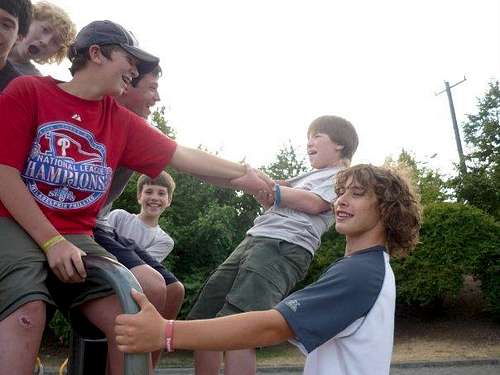
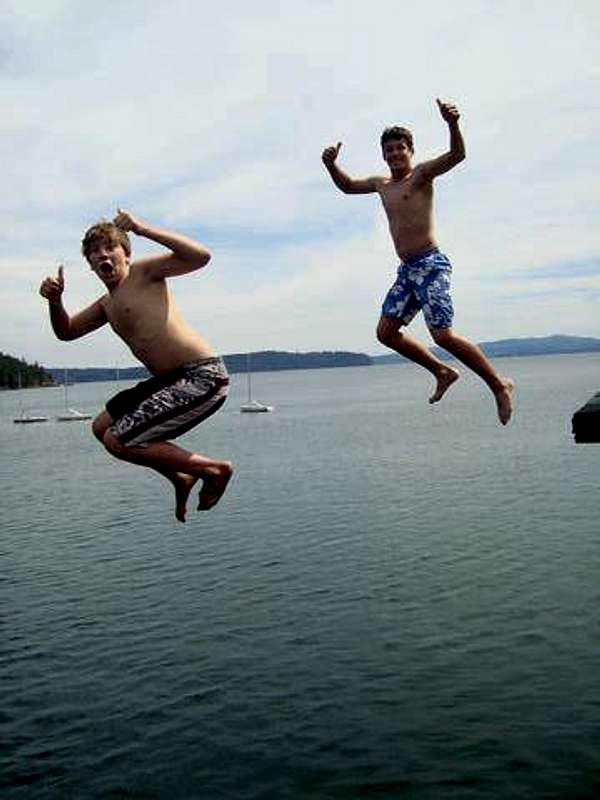
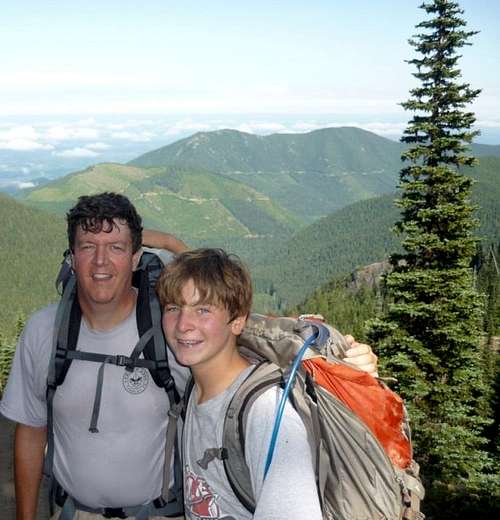



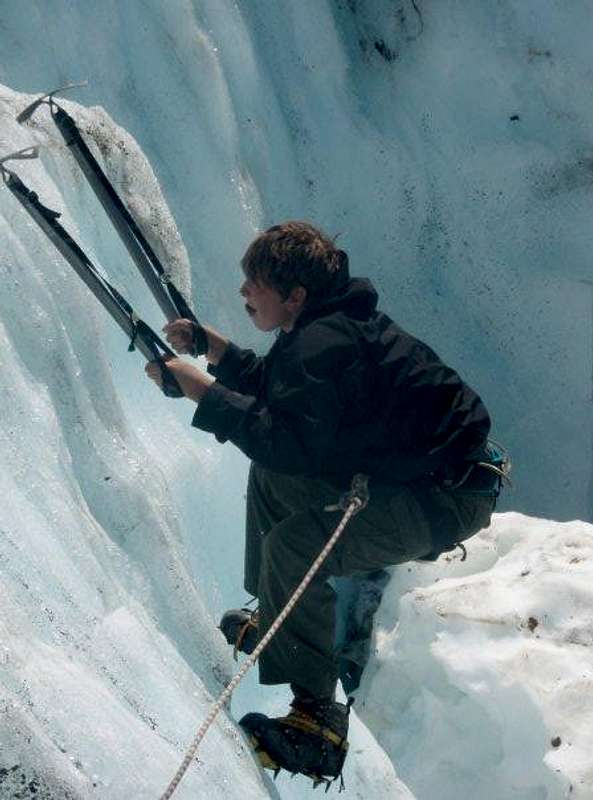
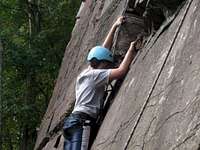



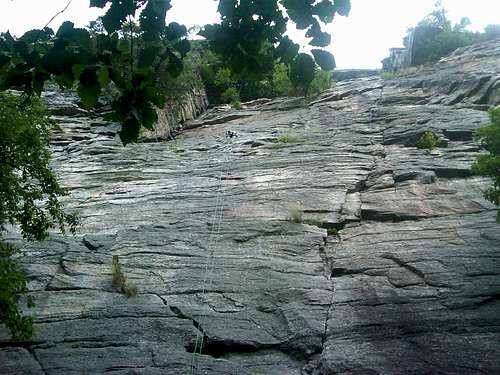
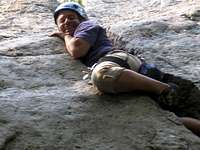


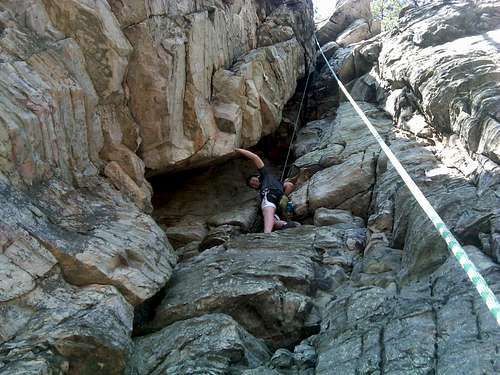


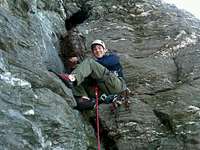

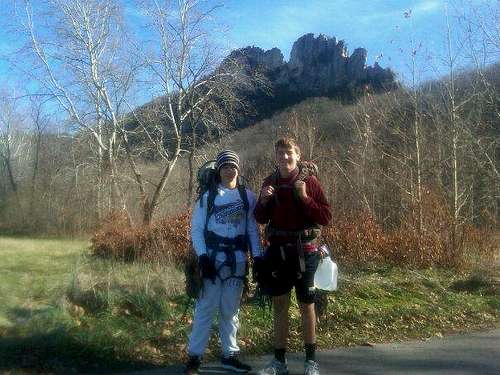





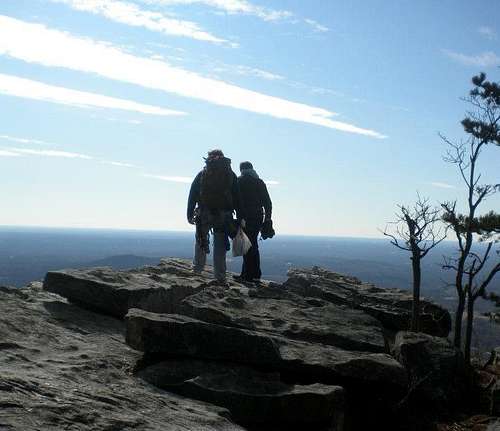





Comments
Post a Comment